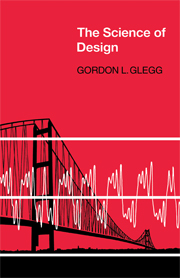Book contents
- Frontmatter
- Contents
- Preface
- 1 The Overall Picture — Plan View
- 2 The Overall Picture — Elevation
- 3 Special Cases
- 4 A Rogue of Variables
- 5 Journeys into Lilliput
- 6 Transformations and Translations
- 7 The Dictatorship of Time
- 8 Looking, Seeing and Believing
- 9 The Consortium
- 10 The Art of Conversation
- 11 Conclusions and Recommendations
- References and Notes
- Index
- Frontmatter
- Contents
- Preface
- 1 The Overall Picture — Plan View
- 2 The Overall Picture — Elevation
- 3 Special Cases
- 4 A Rogue of Variables
- 5 Journeys into Lilliput
- 6 Transformations and Translations
- 7 The Dictatorship of Time
- 8 Looking, Seeing and Believing
- 9 The Consortium
- 10 The Art of Conversation
- 11 Conclusions and Recommendations
- References and Notes
- Index
Summary
In regard to instruments, natural scientists and mechanical scientists have a common interest but a contrasting attitude.
To the natural scientist bigger, better and often more expensive instruments are stepping stones to a triumph, while to the engineer they are more likely to be a short cut to bankruptcy. A natural scientist is often chosen for his ability in evolving instruments as much as for that of being able to interpret what they tell him.
An engineer, if he is wise, will avoid inventing new instruments like the plague (unless that is his actual job) and for three very good reasons.
The first is that he will, almost certainly, be bad at doing it. It is a highly skilled specialized profession where amateurs are likely to make fools of themselves.
Secondly, even if he designs and makes an original one he cannot be sure of its limits of accuracy without a long, probably very long, series of tests. It will be an expensive red-herring.
Thirdly, he must, for the sake both of his own sanity and his sponsors' money pick other people's brains, experience, and production lines as much as possible. He cannot be a one-man band and it is stupid to try.
Don't make instruments, buy them. If you cannot find exactly what you want, modify your research set-up until you can. Only at the very very last resort make your own, and even then do it by a combination or modification of existing ones.
- Type
- Chapter
- Information
- The Science of Design , pp. 75 - 82Publisher: Cambridge University PressPrint publication year: 1973

